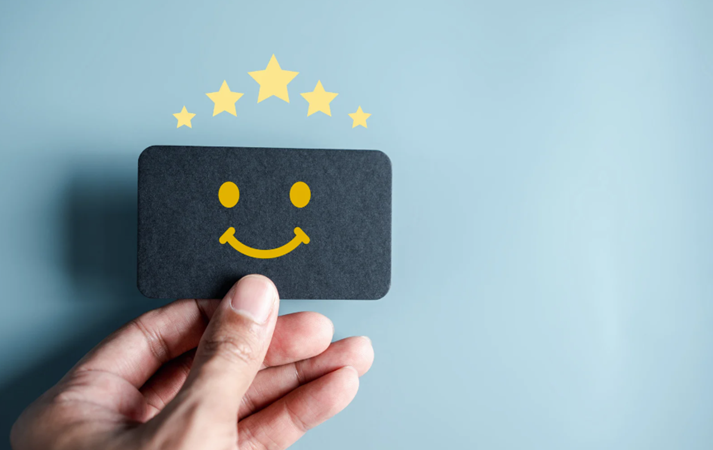The anatomy of B2B influencer marketing
Do an online search for “business-to-business influencer marketing” and you’ll find a wide array of opinions, from proponents – often professionals of such practice – who enthusiastically share success stories from leading global brands, to opponents who think the practice is not worth the investment. Who is right? Why is influencer marketing catching the attention of B2B marketers? In this two-part blog series, we will attempt to establish a common understanding to collectively approach and measure the value of B2B influencer marketing in the future. We will explore common drivers and the efficacies of associated platforms for this practice.
Influencer marketing as form of word-of-mouth marketing
While influencer marketing may be a new term, born out of the proliferation of our user content driven social media era, the level of influence is not confined to social platforms. The most successful influencers are often omnipresent on decentralized social channels and traditional media. Some may even have their own brands or be brands themselves – think Simon Sinek in the business book publishing industry.
Some influencers have oversized influence on their chosen communication channels, even though they are not platform specific. For example, we know Oprah uses TV and print as her mode of influence. With Elon Musk on the other hand, Twitter is his go-to. For these recognizable individuals, they meet their objectives through asserting oversized influence on channels with huge reach. This is not necessarily the case for B2B influencer marketing. Marketers should also consider a definable audience that their influencers can reach with specific messages in the right context.
To be valuable to brands, it is not a requirement for influencers to be big names with millions of followers. Some are valued because they are micro-influencers: people who create a specific online presence to authentically share their passions, skills, or knowledge of something specific. Look up Costco micro-influencers, and you will find a cottage industry of Costco enthusiasts sharing their treasure hunts and finds. The brands that Costco carries are taking advantage of this new world of decentralized social media.
These consumer influencer examples show us that influencer marketing can be understood as extreme word-of-mouth marketing. The outsized influence of select individuals is intended to stem from their achievements, expertise, and ability to connect with a large audience, from online to on-stage. Big name influencers can access other experts, celebrities, events, or places that none of us ordinary people can. To the followers of these influencers, each post is an oracle. Clever marketers would then use expensive analytics tools to dissect the reach, the engagement, and the connections of these influencers to choose the optimal ones to be associated with their brands. The assumption is that the brand equity of these influencers and their opinions will benefit or support the brands they represent or may even influence purchasing decisions.
So, why is there still skepticism amongst senior management? Often, the problem is as old as time: a lack of understanding or alignment on why an influencer marketing strategy is deployed.
Dissecting influencer marketing
If we agree that influencer marketing is an explosive form of word-of-mouth marketing, then a McKinsey framework becomes a useful reference to the deployment of B2B influencer marketing. McKinsey has identified three forms of word-of-mouth marketing: experiential, consequential and intentional.
Experiential is the most common and powerful, driven by the users of a product or service. The conversation may be driven by a poor experience and other users pile on to air their discontent with the brand. On the flip side, conversations can also be driven by users’ love of a brand, as illustrated by fans of mobile devices or skincare products on peer review platforms.
Consequential is when consumers or other intended receivers of traditional media messages begin to amplify or discuss the messages. For example, Cisco spent years building “the Internet of Things” as a category, and countless tech experts today not only subscribe to Cisco’s vision but extends it to the “Internet of Everything.”
Intentional is the form that many people consider to be influencer marketing: using “celebrity endorsements to trigger buzz for product launches.” According to McKinsey, it is actually the least common form of word-of-mouth marketing because the effects are difficult to measure.
The potential for a marketing message to go “viral” depends on who, what, and where: who the messenger is, what is said, and where the message is delivered. These three elements are significant in the B2B context. Typically, the B2B audience is smaller, yet informed. They are making consequential decisions. The decision-making process is complex and often requires some consensus among internal stakeholders. These decision makers are engaged only in the right context, respond to people they trust professionally, and tend not to pay attention to unsolicited messages.
Measuring the value of B2B influencer programs
When looking at measuring value, it ultimately depends on what the business is trying to achieve. Consider business objectives first, then the KPI definition of what influencer marketing will deliver within the overall marketing plan. With a common goal of elevating brand or product awareness, brand health metrics become important goal posts.
In part two, we will discuss three drivers of B2B influencer marketing as part of the larger marketing mix. Stay tuned!
Authors:
Andrew Au, Managing Partner, Intercept Group
Jay Badiani, Chief Marketing Officer, IBM Canada
Kris McGlone, Vice President, Marketing, Axonify
Eric Tang, Executive Vice President, Managing Director, Canada, Porter Novelli
Dhaval Vediya, Director, Product Management, CIBC



































